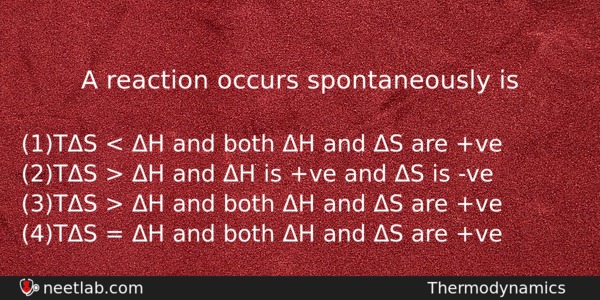Nuclear reactions, often characterized by their incredible energy outputs and transformations, beckon exploration into the intricate dance of subatomic particles. When contemplating the concept of spontaneity within the realm of nuclear reactions, one must navigate a labyrinth of physical principles, energetic thresholds, and quantum mechanics. The inquiry, ‘Does a nuclear reaction take place spontaneously?’ encompasses a spectrum of phenomena, each with its own tales of energy and entropy.
The term “spontaneity” in scientific parlance does not connote random occurrence; rather, it refers to a process that transpires without the need for continuous external intervention. In chemistry, this is usually measured by Gibbs free energy, denoting a system’s capacity to perform work at constant temperature and pressure. Translating this criterion to the nuclear domain requires an understanding of binding energies and the stability of atomic nuclei.
Within atomic nuclei, protons and neutrons exist in a delicate equilibrium, governed by the forces of nature. The strong nuclear force binds these particles together, while electromagnetic repulsion attempts to tear them apart, especially in nuclei with an excess of protons. The potential for spontaneous nuclear reactions arises when this balance is disrupted. An analogy may be drawn to a tightly woven fabric; when a single thread is pulled, it not only unravels that particular segment but may lead to the disintegration of the entire weave.
One prominent example of natural nuclear processes is radioactive decay. Certain isotopes possess an inherent instability—akin to a house on the brink of collapse. Their nuclei transform spontaneously, shifting from a higher-energy state to a lower-energy one while emitting radiation in the form of alpha particles, beta particles, or gamma rays. This decay is fundamentally spontaneous; a nucleus does not require any external impetus to shed its particles, proceeding as if compelled by an unseen hand.
In interpreting the spontaneity of nuclear fission, one must recognize both controlled and uncontrolled conditions. In a nuclear reactor, the fission of uranium or plutonium nuclei is initiated through the absorption of thermal neutrons. This process is predicated on the concept of a chain reaction, where the splitting of one nucleus liberates additional neutrons capable of inducing further fission. Here, spontaneity exists in the context of sustained reactions—the initial act requires an external neutron to trigger the cascade effect, although once commenced, the reactions proceed autonomously.
Conversely, spontaneous nuclear fission is an exceedingly rare process. Certain isotopes, like californium-252, can undergo fission without neutron bombardment, an event akin to a tightly coiled spring suddenly uncoiling due to internal pressures. The likelihood of such reactions occurring spontaneously is dictated by the intricacies of nuclear structure and decay pathways, underscoring the stochastic nature of quantum events.
An essential concept related to nuclear spontaneity arises from the thermodynamic framework—specifically, the interplay of entropy. Just as water may spontaneously flow downhill in a gravitational field, nuclear reactions often navigate a pathway toward increased entropy. Nuclear fusion, the process that powers stars, exemplifies this principle on a cosmic scale. When lighter nuclei combine into heavier ones, the resultant energy release is immense, yet the conditions required for such fusion necessitate extreme temperatures and pressures, akin to compressing a star into its own core. In stellar environments, once the threshold is surpassed, fusion occurs with an almost seductive inevitability.
Consider now the implications of these spontaneous processes. For instance, the nuclear reactor harnesses fission reactions in a deliberate manner to generate electricity. However, the specter of uncontrolled fission events, such as a core meltdown, serves as a chilling reminder of the raw power inherent in these reactions. They rest on a precipice, where equilibrium can be disrupted in the blink of an eye, leading to catastrophic results. The delicate balance between controlled harnessing and spontaneous release exemplifies the duality of nuclear energy—a phoenix, liberating warmth and life on one hand, yet capable of wreaking havoc on the other.
Furthermore, the concept of spontaneity does not limit itself to conventional understandings of decay and fission. In the grand tapestry of astrophysics, some primordial reactions that occurred shortly after the Big Bang unfolded with spontaneity, forging the elements that would later populate the cosmos. The nucleosynthesis during these early moments transpired under conditions wholly alien to our terrestrial experience, yet within them lay the seeds for galaxies, stars, and ultimately, life itself.
In conclusion, the question of whether nuclear reactions occur spontaneously unearths a multitude of layers, revealing the rich interplay of forces, stability, and societal implications. While at times there exists a natural proclivity for certain nuclear processes to unfold without external influence, the context is paramount. Nuclei may find themselves ensnared in a delicate ballet, oscillating between existence and transformation. It is this intricate dance, steeped in energy shifts and quantum mechanics, that bewitches our understanding and ignites our insatiable curiosity regarding the very fabric of the universe.












